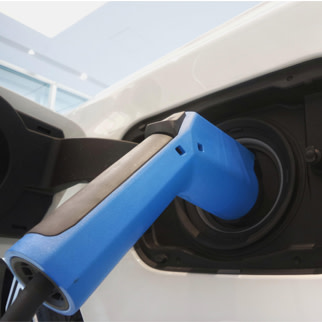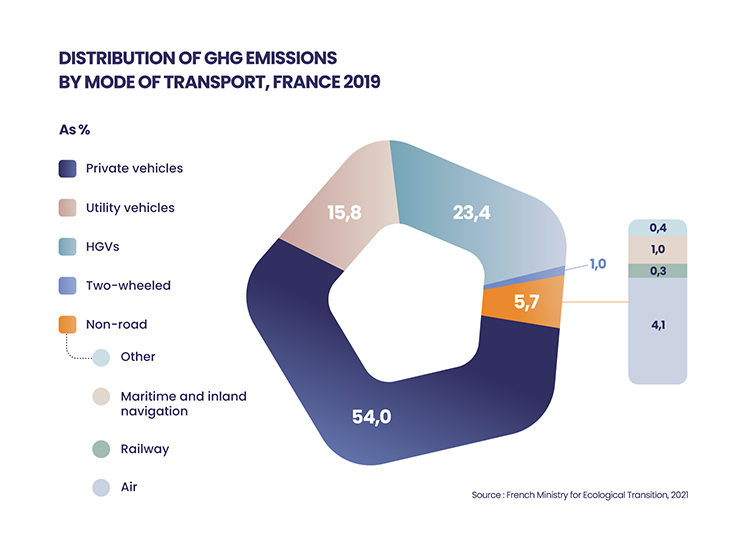Our solutions for low-carbon mobility
Mobility is the one of the top levers for decarbonisation in France. With NGV-bioNGV and hydrogen, you can now significantly reduce your business’s carbon footprint, regardless of the distances you need to travel or the specific nature of your needs. Explore our low-carbon mobility offers.


At your side, decarbonising your mobility
Are you looking for virtuous alternatives to fossil fuels, helping reduce the carbon footprint left by your light or heavy vehicles? Do you want to achieve a quick and significant reduction in greenhouse gas emissions from your business, using mobility as a lever? Our experts can advise you on how to find the best low-carbon alternative according to the situations you face. NGV-bioNGV mobility or hydrogen: there’s a solution for you!
The solutions we offer
Captive fleets: a powerful lever to decarbonise mobility
France’s national low-carbon strategy (SNBC) aims to achieve carbon neutrality in the transport sector by 2050. To reach that target, tomorrow’s mobility will have to be based on a more varied, local and less carbon-intensive mix of fuels. As part of that transition, so-called “captive” fleets, made up of business or local authority vehicles, will have a major role to play.
Business and local authority mobility (utility and heavy vehicles) actually accounts for 40% of greenhouse gas emissions from transport in France. Conversion of those fleets to low-carbon fuels, putting so many less polluting vehicles on the roads, will therefore have a considerable impact on the nation’s carbon footprint.

Captive fleets: a powerful lever to decarbonise mobility
Natural Gas for Vehicles (NGV) and its renewable version – bioNGV – offer a more virtuous alternative to traditional fuels for light and heavy vehicles alike. Indeed, with NGV, fine particulate emissions are virtually zero and NOx (nitrogen monoxide and dioxide) levels are half those permitted by the Euro VI standard. With NGV being a mature technology, it is also easy for users to adopt. Indeed, a wide range of NGV vehicles is already available, be they private or heavy transport vehicles, and at competitive prices.
We talk of bioNGV when vehicles are supplied with biomethane. This renewable gas is produced by methanisation, a process allowing the methane produced naturally by the decomposition of organic matter – agricultural, agribusiness or local authority waste – to be captured and recycled. BioNGV can also be part of a circular economy approach, leading to many virtuous developments: local and non-relocatable energy production for local consumption, job creation, and a solution to the problem of managing household waste and agricultural co-products.
Hydrogen mobility: how does that work?
Hydrogen can be used as a fuel for electric vehicles, in a fuel cell. That cell generates an electrical voltage through the oxidation at one electrode of a reducing fuel – hydrogen – while another electrode reduces an oxidising agent, such as oxygen from the air. That reaction releases just water and emits no particles. Hydrogen therefore belongs to those solutions for the future which will improve air quality, and at the same time constitutes an innovative and renewable alternative fuel for electric vehicles.
To provide low-carbon hydrogen mobility, the hydrogen can be produced by electrolysis of water using renewable energy from wind, solar or hydro. Electrolysis uses an electrical current to break the water (H2O) down into oxygen and hydrogen gases. This production method is therefore decarbonised and at the same time helps avoid the wastage of electricity that often occurs with renewables.
In addition, research is currently under way on internal combustion engines that use hydrogen as a fuel.
Future partner?
Do you have plans for any hydrogen or NGV-bioNGV filling stations? Are you looking for a partner to bring them to fruition? Do you share the vision set out by Teréga Solutions?
If so, please do not hesitate to contact us!

Our other solutions:
- HydrogenSee the solution
- MethanizationSee the solution




